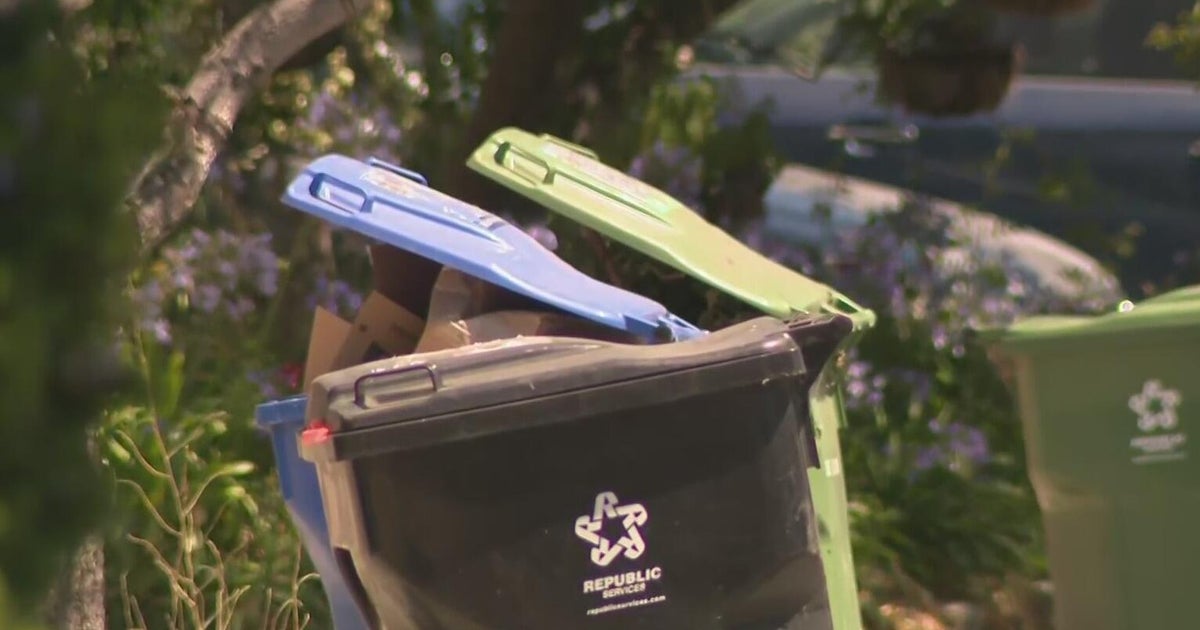Foodie Chap With Chef Ken Frank of La Toque
KCBS radio "Foodie Chap" and KPIX 5 television "Eye On The Bay" host Liam Mayclem introduces us to the culinary stars behind the food and wine loved by so many in the Bay Area.
KCBS Foodie Chap Podcast:
KCBS Foodie Chap w/ Chef Ken Frank
Acclaimed Chef Ken Frank is entirely self-taught and brings a distinctive, personalized touch to his contemporary French cuisine at La Toque restaurant.
Frank's love of French cooking began when his father moved the family from California to Yvoire, France. Frank chose to remain in France and began his culinary career as a dishwasher. After returning to California and refining his skills, Frank first achieved national acclaim at age 21 at the Los Angeles restaurant La Guillotine. In 1979, he opened the first La Toque on the Sunset Strip. After a 14-year run, Frank sold the restaurant and in 1995 opened the award-winning Fenix at the Argyle.
In 1998, the second incarnation of La Toque made its debut in Rutherford, California at The Rancho Caymus Inn. La Toque was awarded a Michelin Star in 2007, the first year the organization published a San Francisco Bay Area guide.
In 2008, Frank moved the restaurant to The Westin Verasa Napa. La Toque has continued to be well-received by the nation's top critics and reviewers. In 2008, La Toque earned a three-star review from the San Francisco Chronicle's Michael Bauer and in October 2009 was honored again with a Michelin Star, which it still retains today.
Ken's Tips For Cooking the Perfect Steak
Start with a thick cut steak to serve at least two. With a thick steak you can have it all, a nice tasty sear on the outside and big fat juicy pink center on every slice. You simply cannot achieve this with a scrawny steak.
If possible, let the steak warm up to room temperature, covered of course, for a few hours before you cook it. The less heat you have to "push" into the meat, the better. Starting with an ice cold steak is not ideal.
Ignore all advice about lean or "healthy" meat. There are plenty of low fat opportunities in life, steak is not one of them. Marbling (Fat) is your friend, the key to tenderness and flavor.
The only seasoning you need is salt and pepper. Use plenty, and season the meat just as you start to cook it, not before. If you salt it too early it will start to "cure" and draw moisture from the meat! Never marinate a piece of meat unless you want it to taste like salad dressing. Cooking a soggy marinated piece of meat is a fool's errand. It will not sear and seal correctly.
For perfect flavor, sear the meat on all sides over very high heat until a dark rich brown color, avoid char unless you really like the burnt bitter flavor that comes with it. You can cook it in a pan with a little oil, or on a really hot grill. Unless you have a really hot grill with a good heavy grate, stick to the pan. BBQ grills with thin wire grates will never produce a good sear. Do not squirt water on your embers to reduce flare ups, move the meat around to avoid direct prolonged flame contact. To that end, don't try to cook too many steaks on too small a grill.
Rest. The single biggest factor in a perfect tender juicy piece of meat, from single steak to a 25 pound Turkey, is rest. The general rule of thumb is 50%. Once you have a good understanding of this concept and a little practice, you will nail meat every time. If you roast a pork loin for 20 minutes, it needs to rest another 10 to finish cooking before you slice it. Let's use the steak as an example. After we sear the steak heavily on all sides, if we were to slice it immediately, we would see that the outside was hot, gray and well done, while the center was dark red, nearly raw. It would be tough and juice would run all over the cutting board. If allowed to rest, standing on edge so it doesn't continue to stew in its' own juices, the temperature of the meat will even out from the edge to the center. As the temperature evens out, proteins that have dissolved and degraded while cooking thicken the juices, the fibers relax and "Voila", a juicy tender perfectly pink piece of meat, nice and warm in the center.
With a thick steak I find the best thing to do is actually sear it, let it rest and then warm it back up in a hot oven for a few minutes before slicing and serving.
Bon Appetit!
VIDEO: "5 Questions with Chef Ken Frank"
Fiscalini Pearl Tapioca
Yields 1 Quart
1 tablespoon Canola Oil
½ cup white onion, diced fine
¾ cup large pearl Tapioca
2 teaspoons salt
1/3 cup dry White Wine
2/3 cup water
1 cup milk
3/4 cup Heavy Cream
1 ½ cups grated Fiscalini Cheddar cheese, packed tightly
Sweat Onions in canola oil on low heat until tender but not colored.
Add tapioca and salt, stir together as if making rice pilaf.
Add 1/3 cup dry white wine and 2/3 cup water. Bring to a simmer over moderate heat and cook, stirring frequently to prevent sticking. When half of the liquid is absorbed, add the cup of milk and the cup of cream and bring back to a simmer. Remove from heat, cover and let sit for 30 minutes allowing for the tapioca to soften.
Return to moderate heat, add the grated cheese and cook at the lowest simmer possible, stirring constantly for 5 minutes. Remove from heat and cover for another 20 minutes until the pearls are translucent. Verify seasoning and adjust consistency with a little milk if the tapioca is too thick.
(TM and © Copyright 2013 CBS San Francisco and its relevant subsidiaries. CBS RADIO and EYE Logo TM and Copyright 2013 CBS Broadcasting Inc. Used under license. All Rights Reserved. This material may not be published, broadcast, rewritten, or redistributed.)



